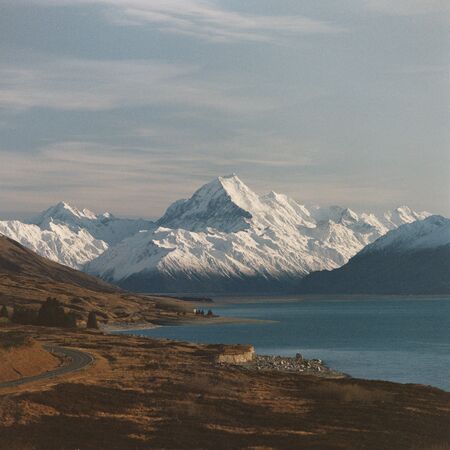Adelaide on two rolls of film. I left the digital camera at home and instead took the silver tank, the Olympus OM-1 made in 1973. M and I took The Overland train from Melbourne to Adelaide. My last train trip was a few years ago, travelling between Wellington and Auckland on the Northern Explorer. There, the variation in volcanic terrain kept me entertained. In contrast the majority of this trip trundled along through the flat grandeur of the Victorian countryside. The grass was burnt from the summer sun and the desolate landscape and gentle rocking of the train made me slip in and out of naps. The train trip took ten hours, though the monotony of the bright landscape paired with general train chatter made it feel shorter.
The weather forecast was for sunny blue skies so I loaded a roll of Kodak Portra 400. Opportunities for photographs on the train were limited – everything had to be shot through the window.
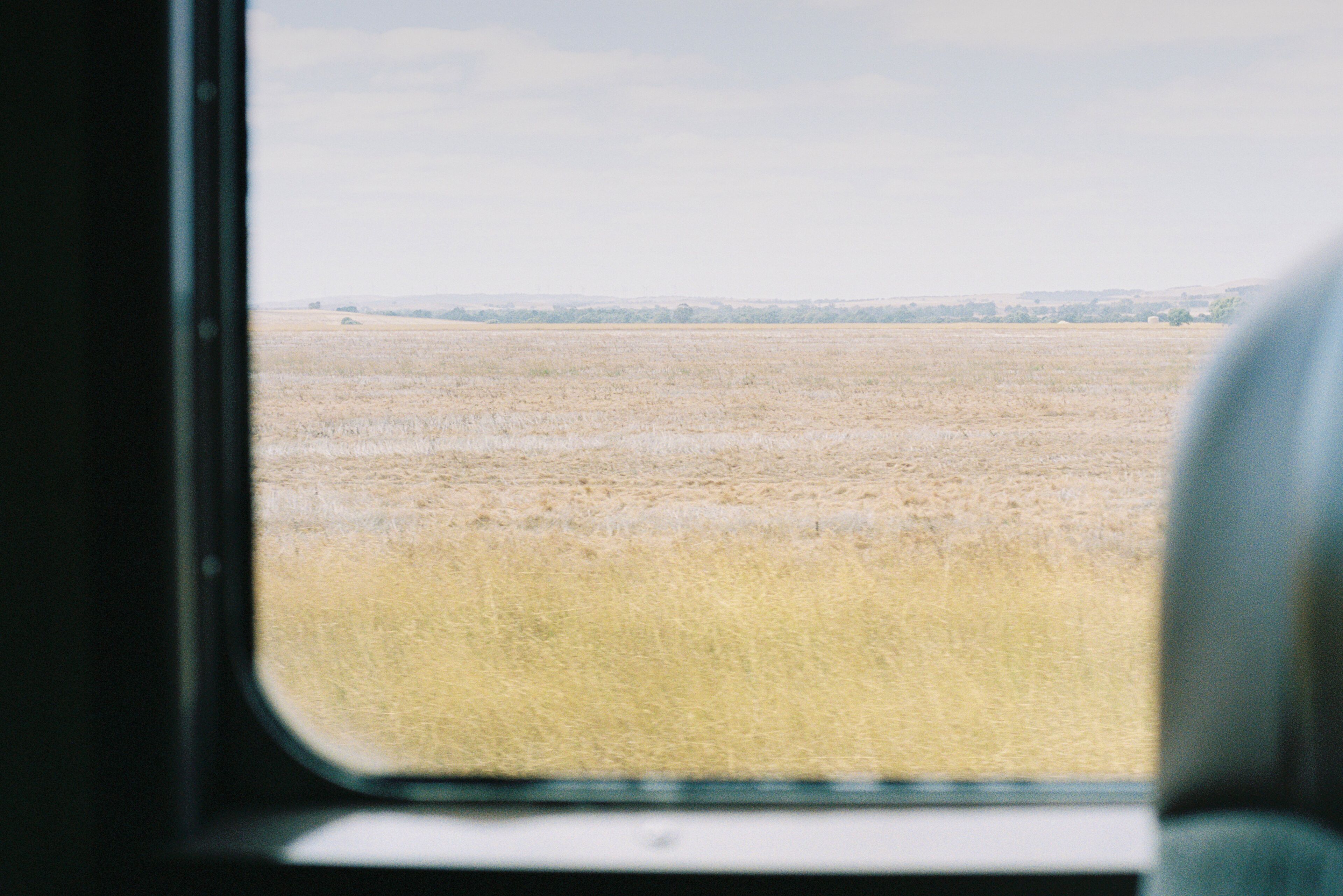
Somewhere in Victoria.
We disembarked at a train station in central Adelaide and immediately engaged in combat with the forty other groups in ordering a taxi. Ours arrived and we were at the apartment in time to watch the sunset. Throughout the trip I was primarily shooting on the 50mm f/1.4 Zuiko, with the 28mm f/2.8 Zuiko in my pocket incase I needed the wide angle.
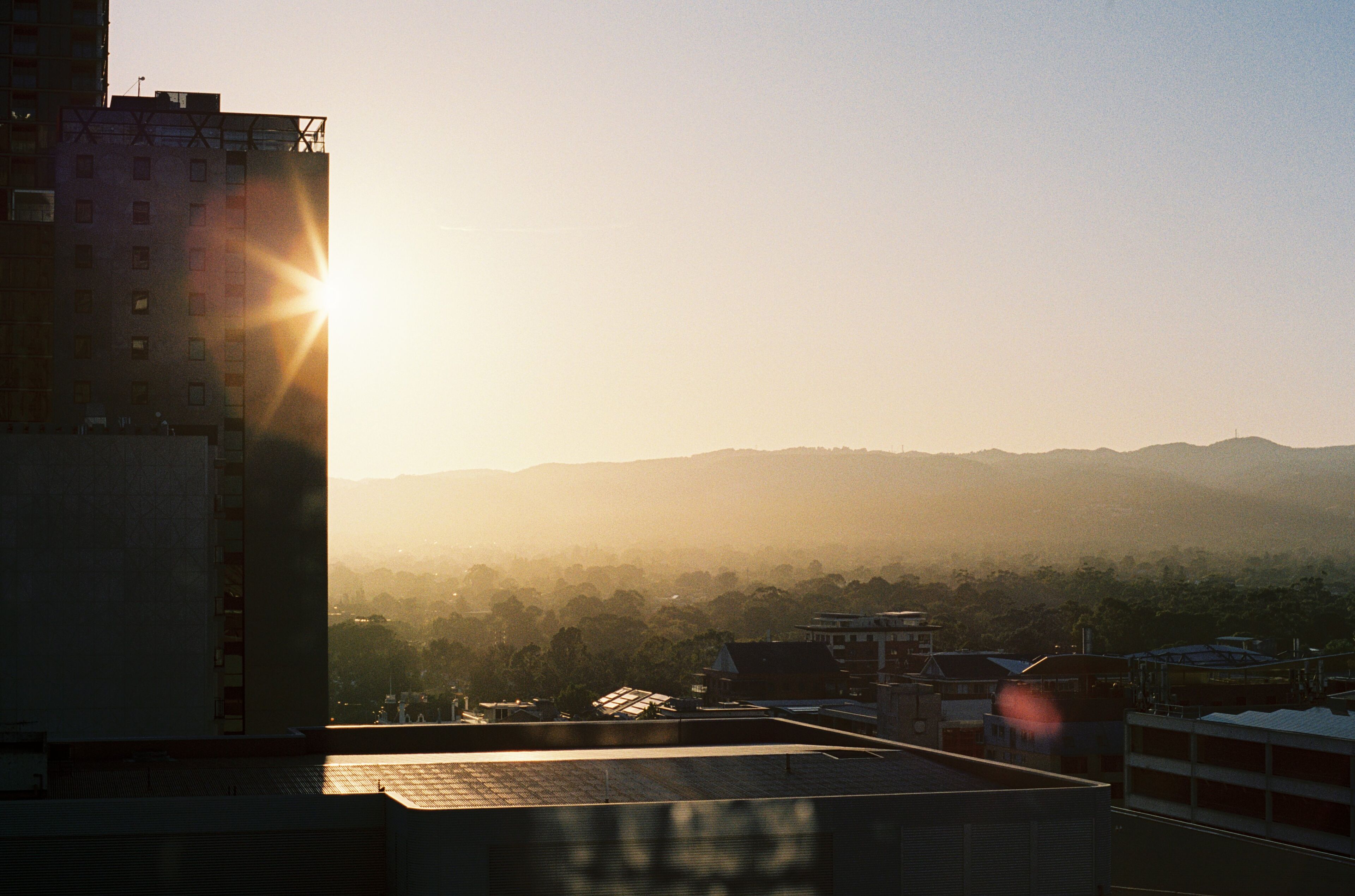
Sunset in Adelaide after a day on the train.
M was eager to see the beach, so the next morning we took the tram to Glenelg to look around. The local museum, in the building to the left of the ferris wheel, was intriguing. It went covered the settlement of the British in the area. Despite being local history, I recognised some names including Edward Gibbon Wakefield, a chap who’s prominent in New Zealand history.
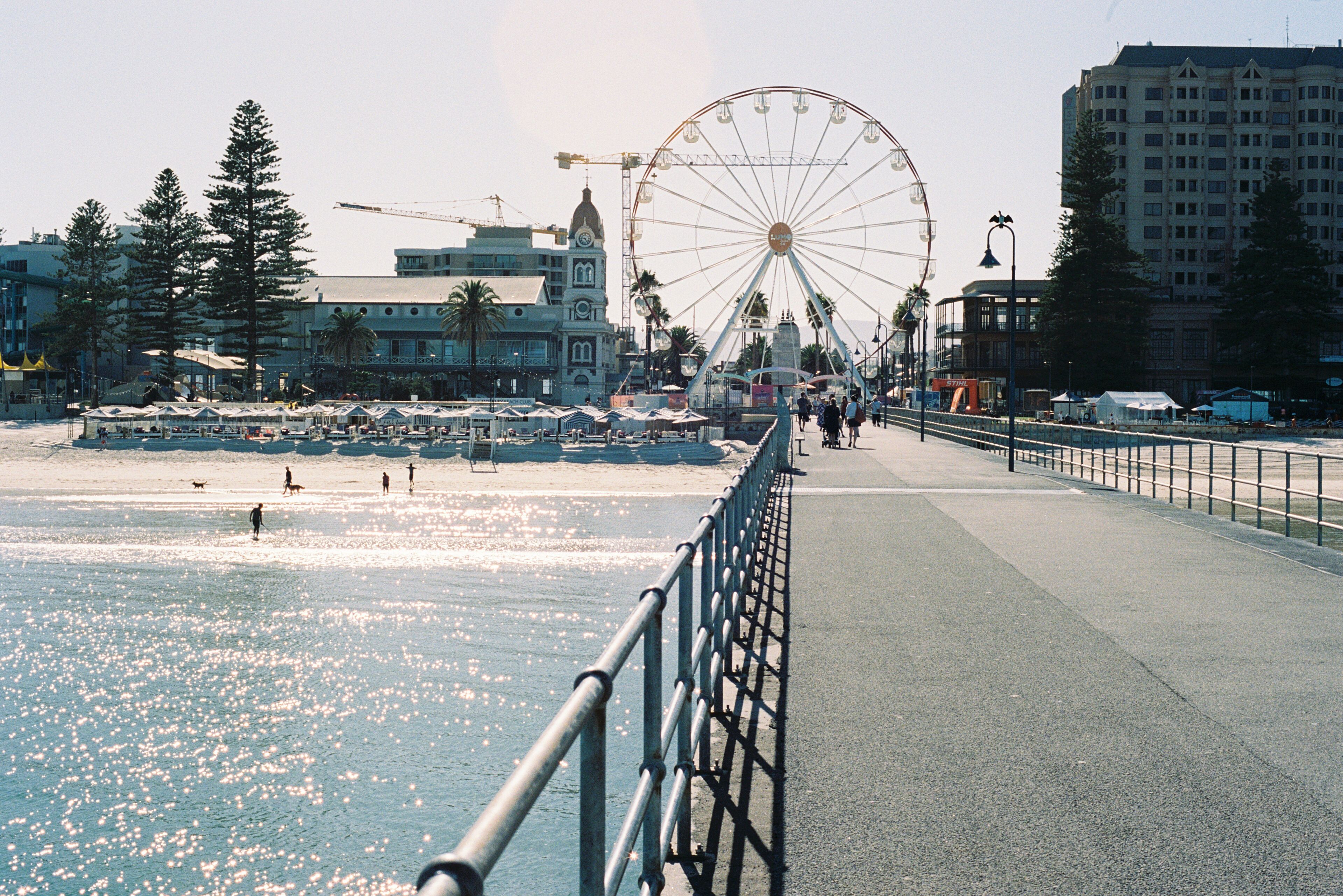
Glenelg.
The above two photos are shot looking directly at the sun and we see the combination of an old lens and Portra film result in the desaturated look. Without anything else to compare it against they look fine, but the two pictures below show the saturated colours Portra can render.
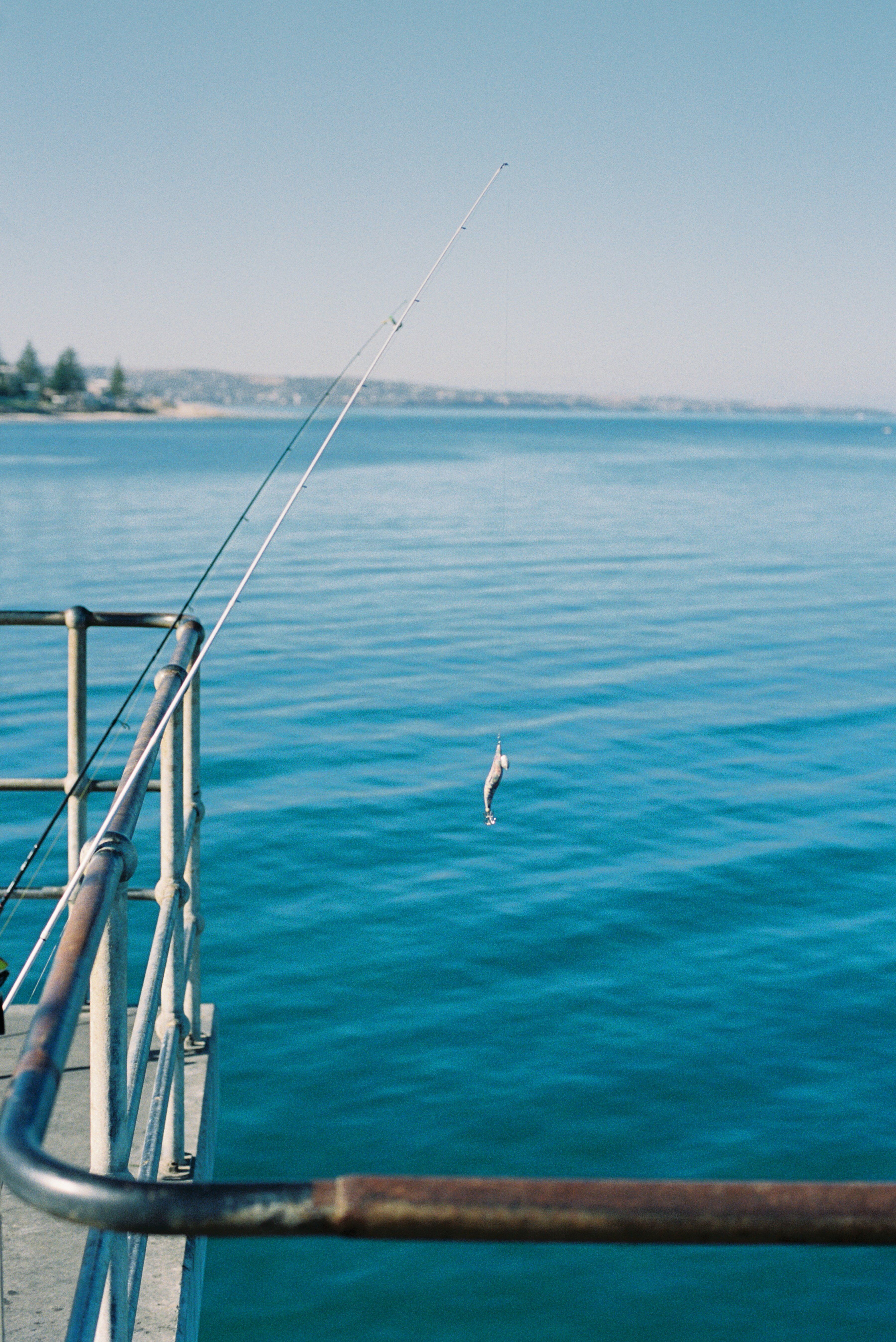
End of the pier.
This shot below especially, super saturated colours just makes the frame. Without the differing shades of blue and the contrast against the yellow sand the shot wouldn’t work. Trying to recreate this look on a digital camera in post-production would result in something from uncanny valley.
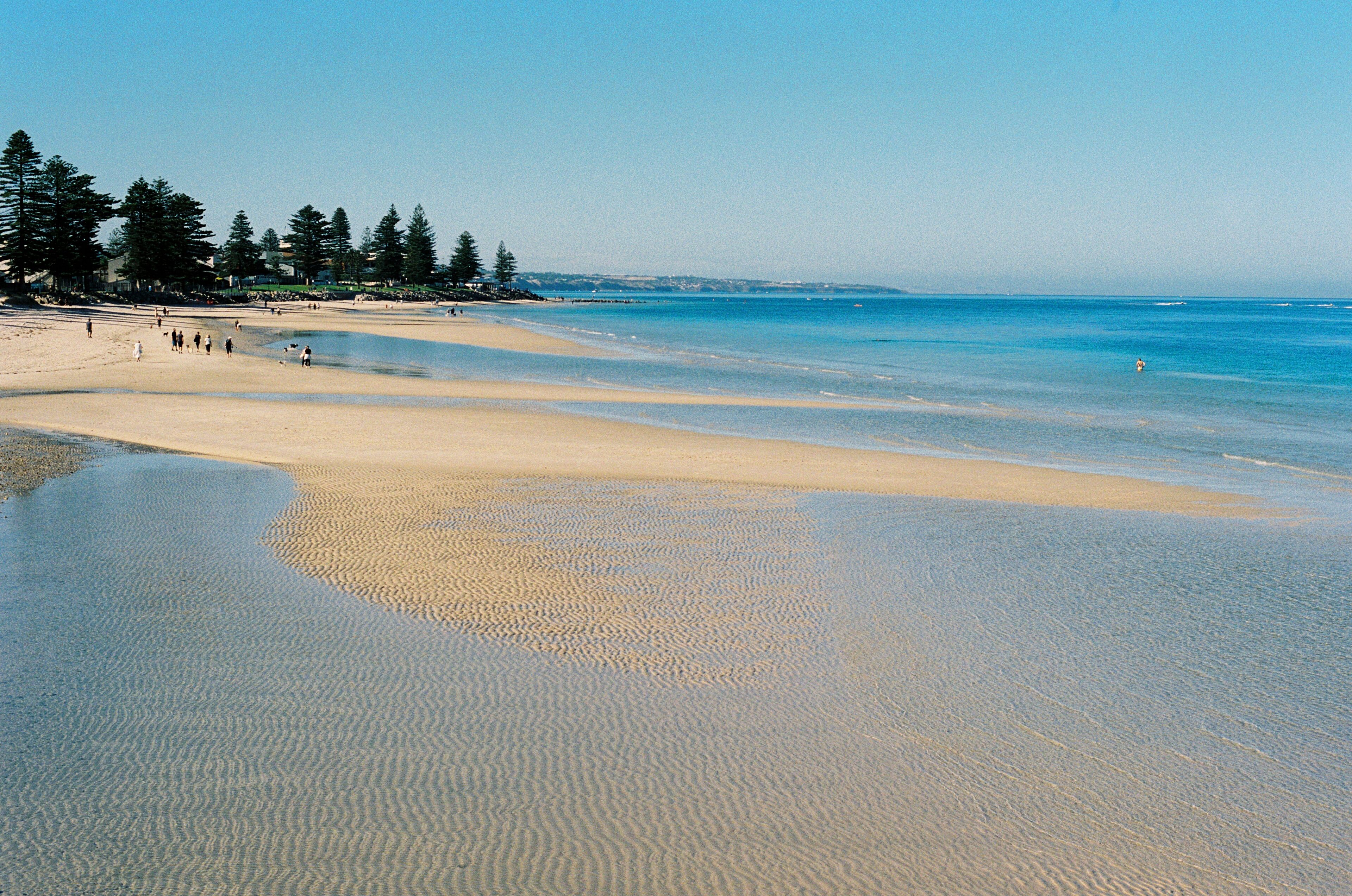
Glenelg Beach.
The next day we want to the Botanic Gardens and wandered around for a few hours. Within the gardens we came across a couple of unexpected surprises. Turning the corner on a path we were delighted to see the National Wine Centre of Australia. It pretends that it’s a museum (and is worth looking around) but really it serves to get people pissed in an enjoyable garden setting. Worthy indeed! The other surprise was when we stumbled upon the Museum of Economic Botany. Not as romantic as the wine bar in the first museum, but if you’re wanting to see one of every seed, bark, flower, and root in South Australia – this place is for you.
Below is one of my favourite photographs from the trip. It’s in one of the many glass houses in the Botanic Gardens. This was shot on the 50mm lens at f/1.4. The character of old lenses comes through at wide apertures and the bokeh balls at the top of the frame were an unexpected surprise to mirror the lily pads.
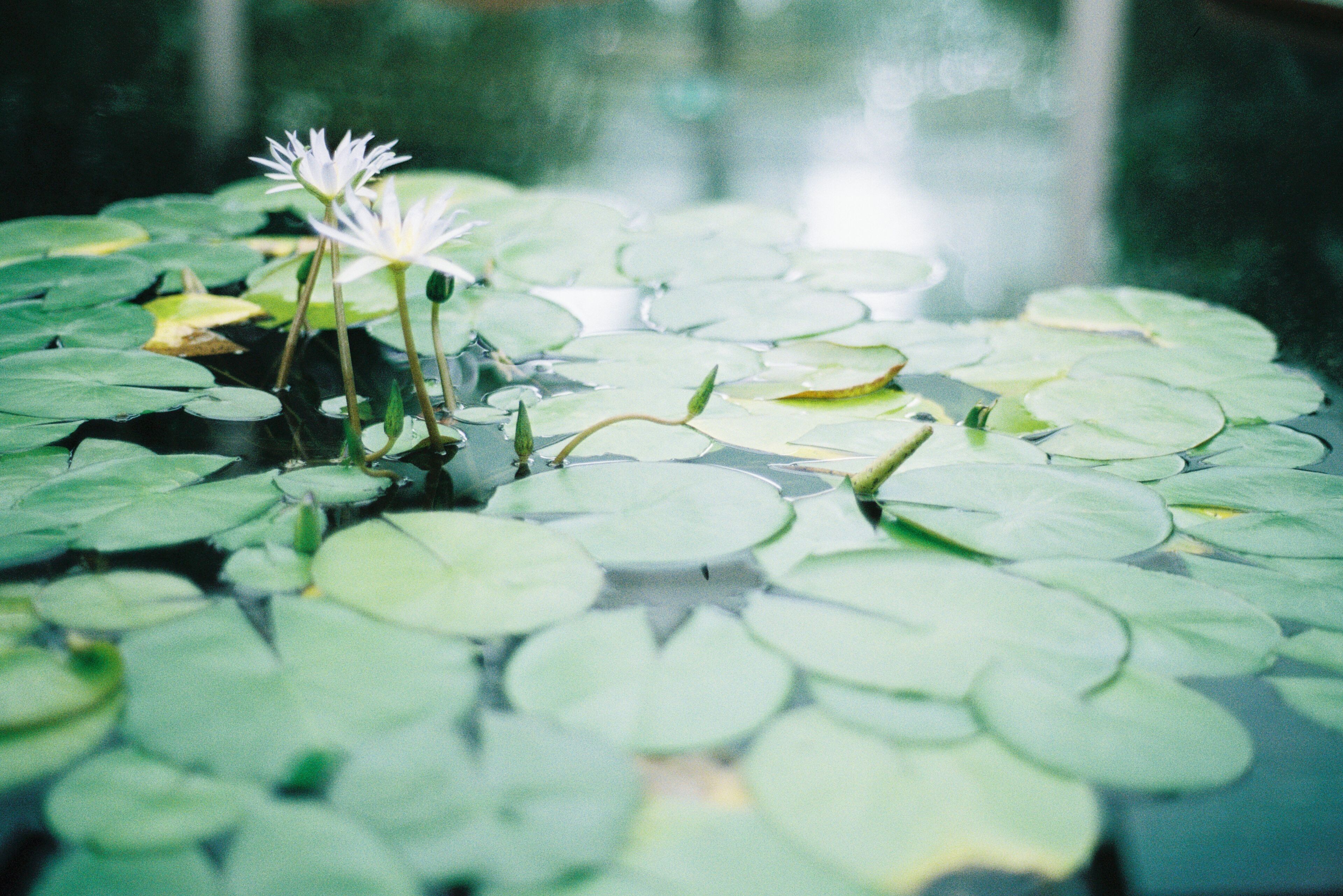
Circles in depth.
The Adelaide Fringe Festival was in full swing. Large areas of parks were sectioned off and filled with bars, food trucks, musicians, and tents for the festival shows. We went along for a couple of nights, and on the second night brought the camera with the 28mm lens and a roll of Filmneverdie’s Umi 800 – a cinestill-esque film.
This first shot was when we were wandering around the festival grounds. The people in the frame were punters like us taking part in an interactive show. We were walking past and had no more context than what you can see - the folks were quiet and funneling on the bus like some sort of zombie or dystopian setting.
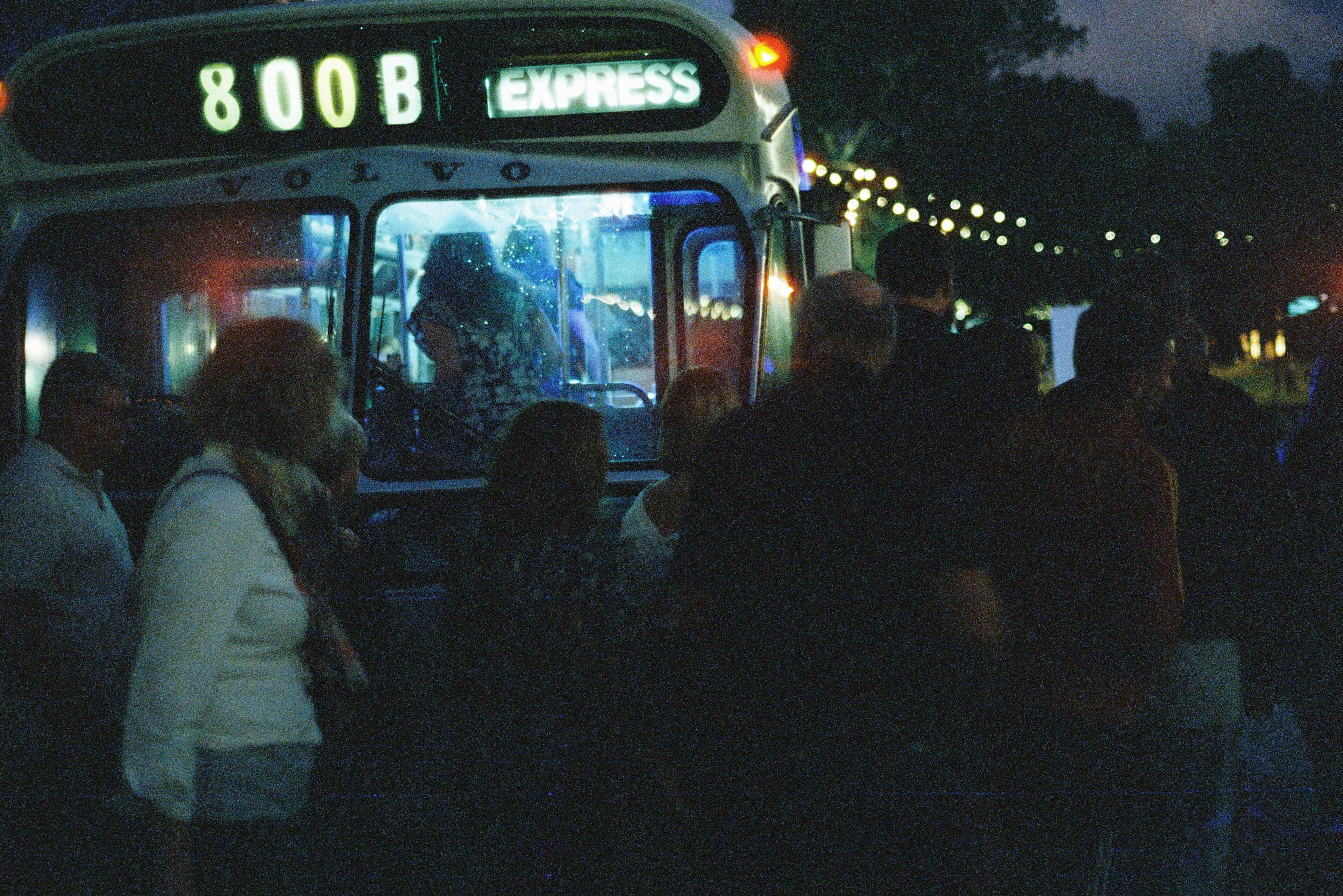
All aboard. Contrast.
The next is more experimental photography inspired by Tristan Zand. M and I were at a table at an outdoor bar watching a piano man play. All around the lights shon and behind him the ferris wheel spun. I set this as a half second exposure and shot away. That’s when I learned the old Olympus OM-1 I was shooting had miscalibrated long exposures. I don’t know how long it exposed for so just tried half a dozen combinations and hoped one would turn out. Some failed due to camera movement, others due to people not moving at all, but this one worked.
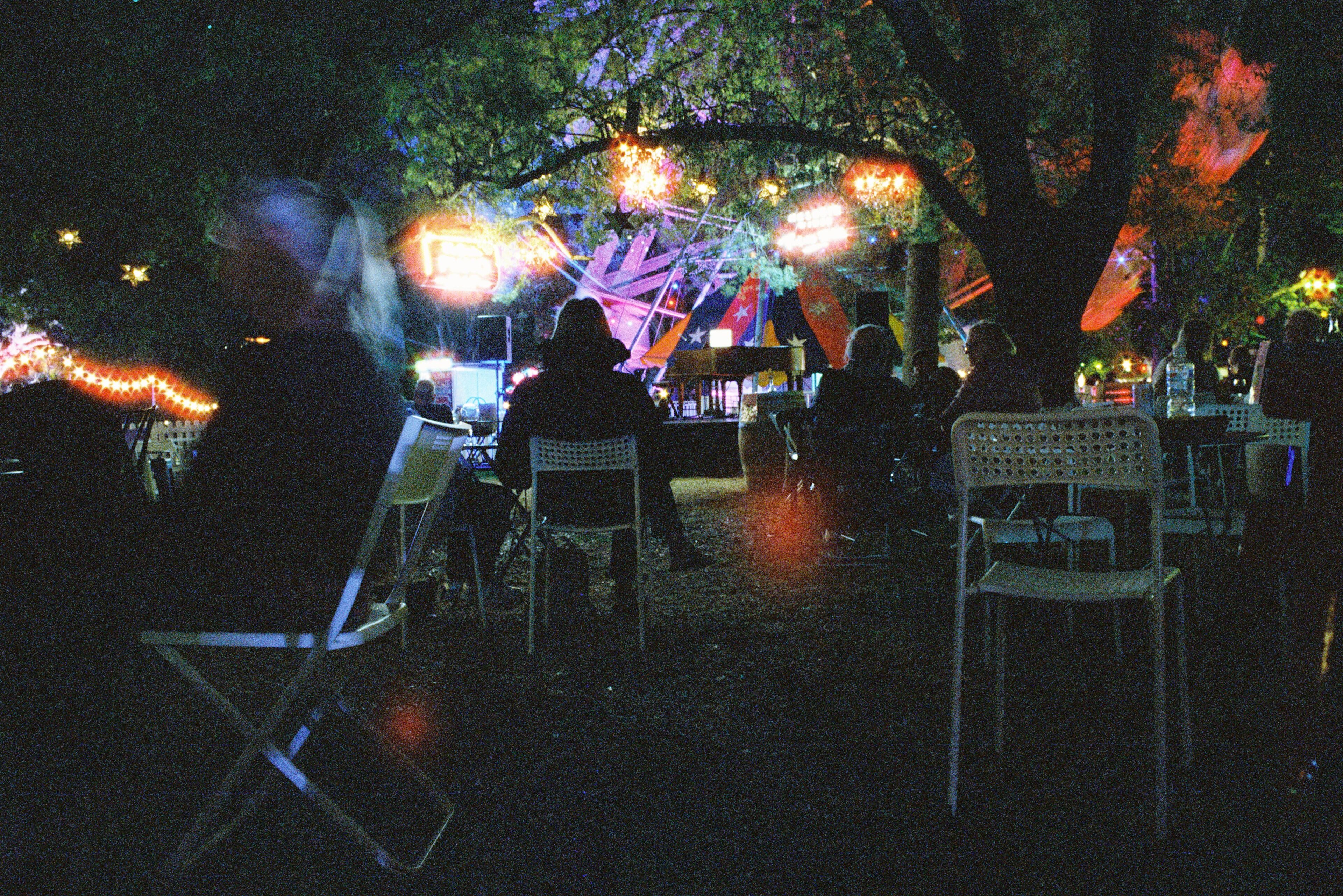
Piano man (absent).
Finally, a cliche shot of someone taking a shot. My eyes flick back and forth between the people and the lights. I think this shot works because they are both subjects. Spectacular rendering by the Umi 800 film.
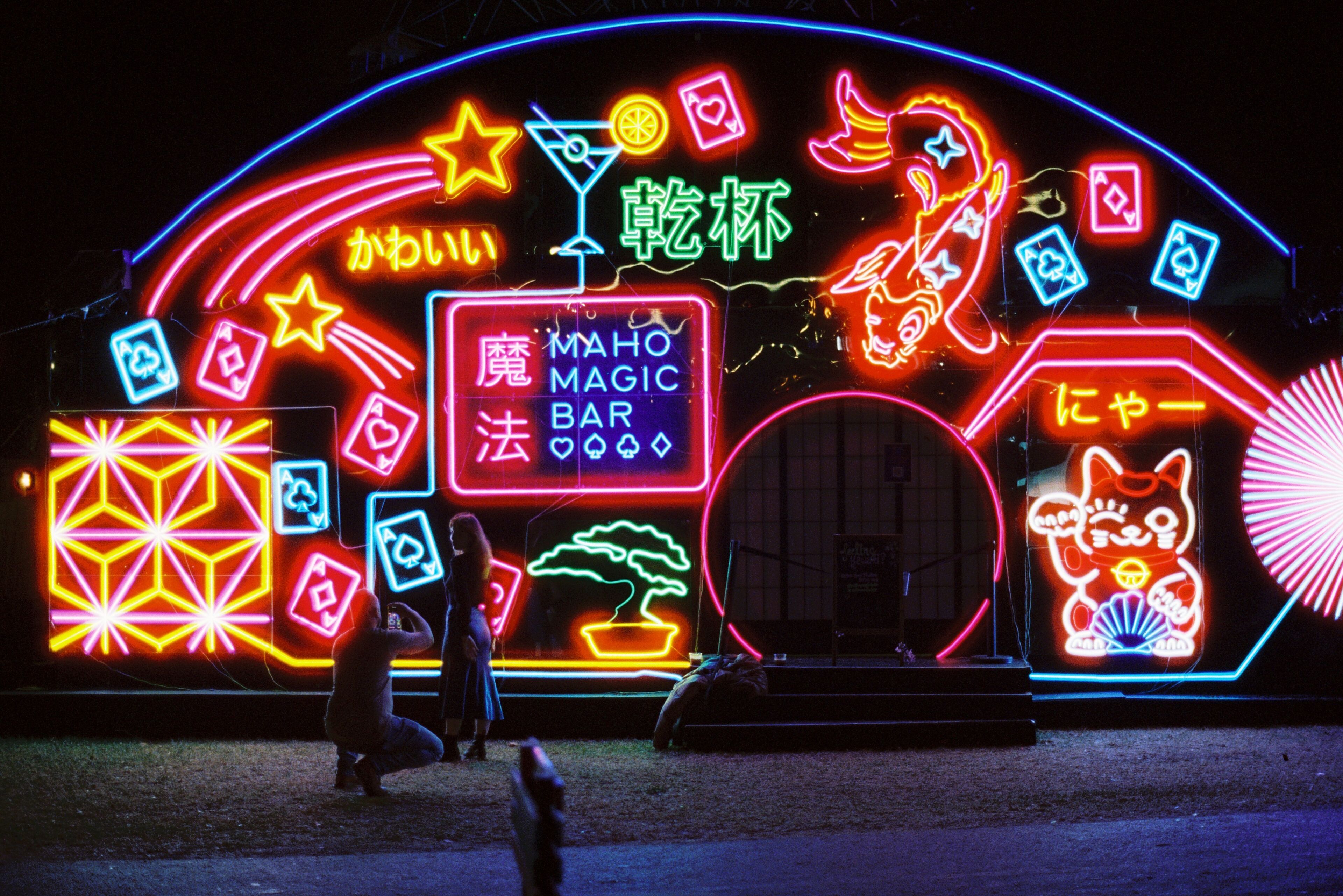
Lights, camera, ...
The Porta and Umi films really delivered and I’ve come away wanting to shoot more film.

